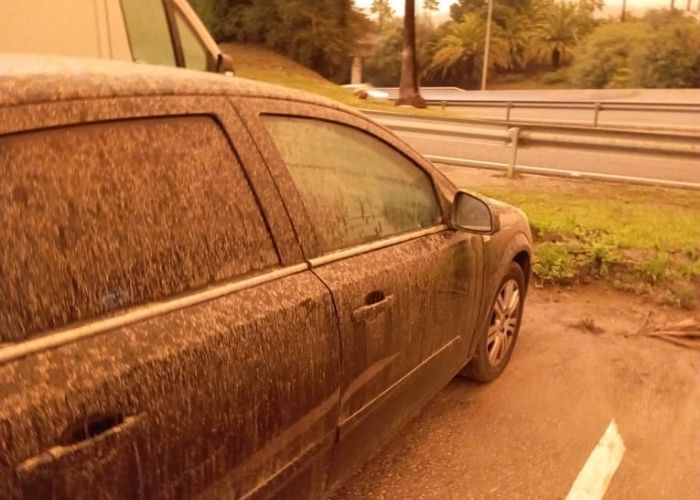Málaga and other parts of Andalucia are bracing for an unusual natural phenomenon known as “blood rain”. This phenomenon is about to disrupt daily life in the south of Spain.
A new DANA (an isolated high-level depression) is approaching Spain. This will happen in combination with a cold front that is expected to bring rain again on Thursday. However, it will be a somewhat unusual rain, namely mixed with calima (desert dust from the Sahara). This creates what La Opinión de Málaga refers to as ‘blood rain’. Others call it mud rain, because of the characteristic red-brown colour that the rain takes on due to the iron oxide particles in the Sahara dust, which falls with the raindrops.
The impact of blood rain
Together with a cold front, the “blood rain” will replace the spring-like temperatures of above 20 degrees Celsius from early this week. The depression with rain will enter Spain from the Atlantic Ocean during Thursday. There it then lets the Sahara dust already present in the air settle on the land. On Friday morning the whole thing will move towards the Mediterranean Sea.
This type of rain is particularly problematic for cars, whitewashed facades and laundry. The mix of water and calima smears everything in its path with a clay-like, muddy layer.
Also read: South East Spain looks like Mars due to a calima
The “blood rain” will not only affect Málaga, but also extensive parts of Andalucia, Extremadura, and the south of the plateau. According to the predictions of Eltiempo.es, there is a possibility that it will even reach Cantabria. One bright spot is that the more DANA progresses and moves towards the Mediterranean on Thursday, the more the air will be free of suspended dust.
What is a calima?
Calima is relatively common in the Canary Islands. After all, they are located off the coast of West Africa near the Sahara and when there is an easterly wind there is almost always desert dust in the air. The most unusual episode occurred in March, when a blanket of dust covered our streets, the sky turned an apocalyptic orange hue and the dust reached half of Europe. Moreover, with bad weather it rained pure mud. That rain of mud turned entire villages brown. Facade cleaners could not cope with the amount of work for weeks.
After March it never got that bad again, but the desert dust returned repeatedly. Even in the north of Spain, for example in May, when the calima was accompanied by high temperatures.
Not unusual
Although the phenomenon is notable, it is relatively common. What is surprising in this case is the timing. Normally, episodes of calima are expected in late spring and early autumn. The fact that this now takes place in mid-February attracts extra attention from meteorologists.


